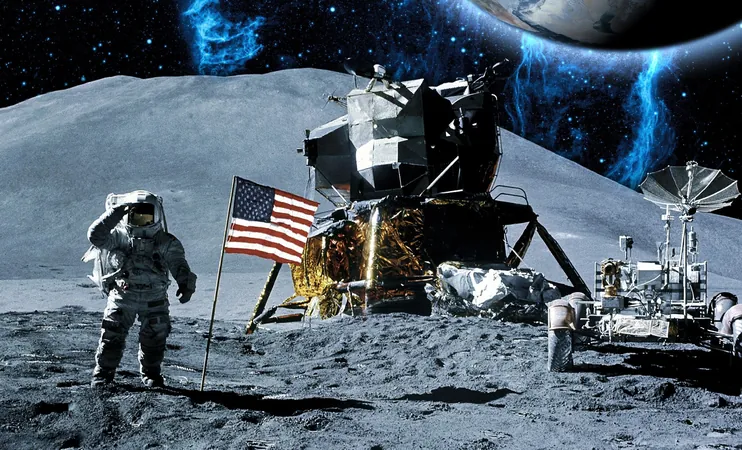
NASA’s Lunar Time Zone: The Race to Control Time on the Moon
2025-05-11
Author: Wei
A Bold Leap for Lunar Exploration
In a groundbreaking move that could reshape our cosmic endeavors, NASA, under directives from the White House, is gearing up to introduce the first official time zone for the Moon. This new concept, dubbed Coordinated Lunar Time (LTC), aims to standardize lunar navigation and synchronize future missions with pinpoint accuracy—a crucial step as international competition for lunar presence heats up.
The Quirky Nature of Lunar Time
While time is a constant concept on Earth, it behaves differently on the Moon. NASA faces a unique challenge: due to the Moon's weaker gravitational pull, clocks on its surface tick faster than those on Earth—gaining about 58.7 microseconds each day! Arati Prabhakar, Director of the White House Office of Science and Technology Policy (OSTP), warns that tiny variances will make exact synchronization significantly trickier.
Kevin Coggins from NASA likens the need for precise lunar timekeeping to the atomic clocks at the US Naval Observatory, which synchronize all things in our nation. "You’re going to want a heartbeat on the Moon," he states, emphasizing that even slight discrepancies could lead to major navigational issues during space missions.
A Unified Time for Lunar Missions
Gone are the days of relying on mission-elapsed time. As we venture deeper into the cosmos, a shared and stable time reference becomes essential. With the recent passage of the Celestial Time Standardization Act, U.S. lawmakers have mandated NASA to establish this lunar time zone by the end of 2026. Importantly, it will be compatible with Earth's Coordinated Universal Time (UTC), but tailored to lunar conditions.
The LTC will likely be established using atomic clocks stationed either on or orbiting the Moon. These clocks will create a weighted average to offset relativistic discrepancies, ensuring that all lunar missions operate seamlessly—as we prepare for NASA’s Artemis program, which aims to return astronauts to the Moon by 2025.
A Foundation for Future Missions
An OSTP official warns that without a common lunar time, coordinating data transfers, precise positioning, and synchronized communications between lunar bases, orbiters, and astronauts will be nearly impossible. The official compares it to a world where no one syncs their clocks—imagine the chaos!
But this lunar time framework won’t just support Moon missions. It’s being designed as a model for future time systems on Mars and beyond, establishing a universal standard for interplanetary timekeeping. NASA is actively collaborating with international space agencies, private enterprises, and scientific bodies to define this 'cosmic clock.'
Synchronizing the Next Era of Space Travel
As numerous spacecraft, businesses, and nations prepare for operations in lunar orbit and on the Moon's surface, the introduction of Coordinated Lunar Time will ensure that all of them operate in perfect harmony, marking a new era in human space exploration.



 Brasil (PT)
Brasil (PT)
 Canada (EN)
Canada (EN)
 Chile (ES)
Chile (ES)
 Česko (CS)
Česko (CS)
 대한민국 (KO)
대한민국 (KO)
 España (ES)
España (ES)
 France (FR)
France (FR)
 Hong Kong (EN)
Hong Kong (EN)
 Italia (IT)
Italia (IT)
 日本 (JA)
日本 (JA)
 Magyarország (HU)
Magyarország (HU)
 Norge (NO)
Norge (NO)
 Polska (PL)
Polska (PL)
 Schweiz (DE)
Schweiz (DE)
 Singapore (EN)
Singapore (EN)
 Sverige (SV)
Sverige (SV)
 Suomi (FI)
Suomi (FI)
 Türkiye (TR)
Türkiye (TR)
 الإمارات العربية المتحدة (AR)
الإمارات العربية المتحدة (AR)